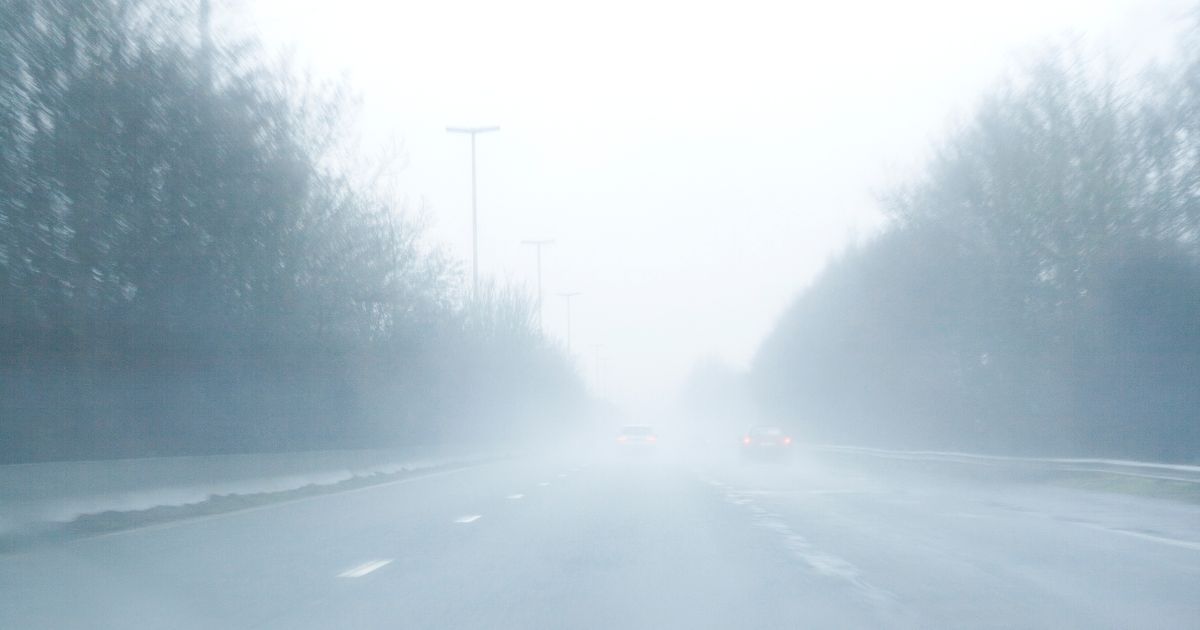Fog is a significant road safety hazard and forms when the air temperature drops so it cannot hold all the moisture in the atmosphere, causing the excess to condense into tiny water droplets that hang in the air. This blanket of water droplets significantly reduces visibility, making driving a complex and potentially dangerous task.
The primary danger associated with fog is its dramatic impact on visibility. The thick shroud of fog can obscure other vehicles, traffic signals, and vital road markings, thereby increasing the likelihood of accidents.
The reduced visibility is not the only problem. Fog can also distort perception and judgment. The lack of clear visual cues can make it difficult for drivers to judge distances accurately, leading to potential collisions. For instance, a driver might think they have ample space to overtake another vehicle, only to find that the other vehicle is much closer than it appeared through the fog. Similarly, fog can make it hard to determine the speed of other vehicles, which may lead to rear-end collisions if a driver does not realize that the vehicle ahead is moving slower than expected.
Fog can create an illusion of slow motion. When drivers cannot see much through the dense fog, they may feel like they are driving slower than they actually are. This can lead to over-speeding, which is particularly dangerous in foggy conditions where the reduced visibility already increases the risk of accidents.
Another danger of fog is its unpredictable nature. Fog can appear suddenly, and its density can change rapidly, leaving drivers with little time to adjust their driving strategies. One moment, the road might be clear; the next, drivers could find themselves enveloped in a dense fog with severely reduced visibility.
Fog can also cause problems with vehicle lights. While headlights are essential for visibility, they can create glare in foggy conditions, further reducing visibility. This is because the light from the headlights reflects off the water droplets in the fog, causing a bright glare that can temporarily blind drivers. This is why you should never use high beams in foggy conditions. While it may seem counterintuitive, it is best to use your regular headlights.
Reduce Speed
The first and most critical step for safe driving in fog is to reduce speed. Lower speeds provide more time to react to unexpected obstacles or changes in road conditions. Reduced visibility often makes it difficult to judge distances accurately, so driving slower allows for safer navigation through foggy conditions.
Use Low-Beam Headlights
While it might seem intuitive to use high-beam headlights in low-visibility situations, they can exacerbate the problem in fog. High beams reflect off the fog’s water droplets, creating glare and reducing visibility. Instead, drivers should utilize low-beam headlights or dedicated fog lights, illuminating the road more effectively without causing reflective glare.
Maintain a Safe Following Distance
Keeping a larger-than-usual gap between your vehicle and the one ahead increases stopping distance. This is particularly crucial in foggy conditions, where reduced visibility can make it difficult to gauge how quickly the vehicle ahead is moving or stopping.
Minimize Distractions
In foggy conditions, it is vital to concentrate entirely on the road. This means minimizing distractions inside the vehicle, such as loud music, unnecessary conversation, or mobile device usage. Full attention should be given to driving to react promptly to any sudden changes in road conditions or unexpected obstacles.
Utilize Roadside Reflectors
Roadside reflectors or marker posts can be invaluable guides when navigating dense fog. They can provide a reference point for the edge of the road and help drivers stay within their lane when visibility is severely compromised.
Use Your Vehicle’s Defroster and Wipers
Maintaining maximum visibility is key when driving in fog. Using your vehicle’s defroster and wipers can help keep the windshield clear, ensuring the best possible view of the road ahead.
Be Patient
Foggy conditions often lead to slower traffic. It is essential to remain patient and not attempt risky maneuvers like overtaking, which can be particularly dangerous due to the reduced visibility.
Plan Ahead
Checking the weather forecast before setting off on a journey can help prepare for potential foggy conditions. If heavy fog is expected, consider delaying the trip until conditions improve.
Regularly Check Your Mirrors
Regularly checking your rear-view and side mirrors is critical in foggy conditions. This helps maintain awareness of other vehicles around you and provides additional time to react if another vehicle is approaching too fast or too close.
Pull Over
If the fog becomes so dense that it significantly impairs your ability to drive safely, it may be best to pull over until conditions improve. When pulling over, use your turn signal well in advance, reduce your speed gradually, and ensure your vehicle is well clear of the main traffic flow. Once you have stopped, turn off your headlights to avoid causing glare for other drivers, and switch on your hazard lights to make your vehicle visible to passing motorists.
A Dayton Car Accident Lawyer at Wright & Schulte LLC Can Help You After a Fog-Related Accident
Fog can wreak havoc on traffic, leading to extremely low visibility. Unfortunately, not all drivers take precautions, which could lead to catastrophic accidents. For legal help, contact a Dayton car accident lawyer at Wright & Schulte LLC. Call us at 937-222-7477 or contact us online to schedule a free consultation. Located in Dayton, Ohio, we serve clients in Cincinnati, Columbus, Cleveland, Centerville, Toledo, Youngstown, and Miamisburg.



